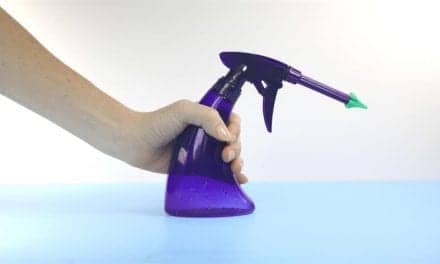Staff Standpoint | December 2013 Hearing Review
Total Communication Devices
By Karl Strom, Editor-in-Chief 
Total communication devices. We’ve talked about them for at least two decades. The theory back in the 1990s was that there would come a day when the lines between a hearing aid and all other communication devices—phones, ALDs, PDAs (now called “tablets”), and computers—would blur as they all merge into a seamless network. “Information Age, I’d like you to meet the Wireless Age…”
Hearing care professionals are in a unique position to witness this convergence of wireless and communication technologies—and to continue to play a central role in providing help for those with hearing loss. Google Glasses aside, our industry, its products, and your skills and services are at the frontier of transmitting and manipulating signals from a wide array of sound sources—TVs, stereos, loop systems, etc—into the ear and from ear-to-ear for optimal audition and comprehension. Several of the “Big 6” hearing aid manufacturers even have headset divisions.
In fact, I had deja vu when writing this last paragraph. In January 2005 (almost 9 years ago), I’d written a similar editorial in which I concluded: “And this is only the beginning. Industry engineers predict that total communication devices are not far off, and these systems will ultimately converge with hearing aid technology…[All} one has to do is look at cellular telephones to know that, in 10 years, we may have a completely different concept of what these devices are, what they do (eg, taking photos), and what they look like.”
Today, those cell phones (now more appropriately called “smartphones”) have changed the world and the way we interact with it. Apps are commonplace and relied upon for everything from identifying a hit tune on the radio to monitoring important medical-related conditions. In this issue, Amyn Amlani, PhD, Brian Taylor, AuD, and colleagues have published results from a study of two smartphone-driven amplification apps (to my knowledge, the PocketLab and Ear Machine apps avoid any mention of hearing loss in their online marketing). While we might feel uneasy about such devices and debate their merits, what we cannot lose sight of is that we’re in the early stages of a major technology shift.
I could be wrong, but I think the advent of 2.4 GHz wireless transmission in hearing aids will turn out to be as revolutionary to hearing healthcare as the transistor, wide dynamic range compression, and digital signal processing. This year, GN ReSound and Starkey Hearing Technologies announced “made for iPhone” (MFi) hearing aids for 2014, but my guess is that others will follow soon with their own distinct features (eg, Phonak’s 2.4 GHz Roger). And, as exciting as these specific products are, the really exciting facet is what this technology portends for the future of your patients.
As 2.4 GHz technology progresses (eg, see Apple’s patent on p 74), the processing of signals in hearing aids will no longer be confined by the considerable restrictions of 1 Volt and a physical area that can be as small as a pencil eraser. When DSP moves into the roomier domains and computing/transmission capabilities of the smartphone, the true power of hearing aid algorithms and accessory devices will be realized. When coupled with the smartphone, the hearing aid will become more akin to a simple receiver (much like a Bluetooth receiver); when uncoupled, it will rely on an IC chip for signal processing and will more closely resemble today’s hearing aids in terms of functionality. But the bulk of the high-level processing and transmitting may be done inside the smartphone.
The benefits of this new smartphone-enabled class of hearing aids will be substantial. At EUHA 2013 in Nuremberg, Germany, GN’s Morten Hansen showed how the upcoming Linx MFi hearing aids can stream audio from iTunes, FaceTime, phone calls, video, and virtually any other iPhone app with exceptional sound quality. The point is there will be all kinds of new strategies and features for hearing aids—many that we can’t possibly imagine today. With these devices, for the first time, you’ll be able to give your patients a sizable listening advantage over normal-hearing folks—plus offer an entire range of cool and useful add-ons. In short, a lot of things will change.
What will not change is the consumer’s hearing disability. In my opinion, it’s good news that personal sound amplification product (PSAP) marketing is being scrutinized once again by the FDA, which in November released a new proposed Guidance Document (see p 74 and HR Online for details). One key factor that distinguishes PSAPs and hearing aids is that the latter device manufacturers and dispensers are bound by law to conform to FDA Class I or II device rules and provisions, including the red-flag and waiver systems. Until those PSAP manufacturers who do market their devices to hearing-impaired consumers come clean and do the same—or FDA deregulates hearing aids or creates an OTC class as Killion & Gudmundsen petitioned for back in 2003, two scenarios that are unlikely for many reasons—our industry and its practitioners continue to operate in a commercially unfair environment. (Please see the BlogPage article by Christopher Schweitzer, PhD, on p 10 for his perspective)
Original citation for this article: Strom K. Staff Standpoint: Total communication devices. Hearing Review. 2013;20(13)Dec:6.





